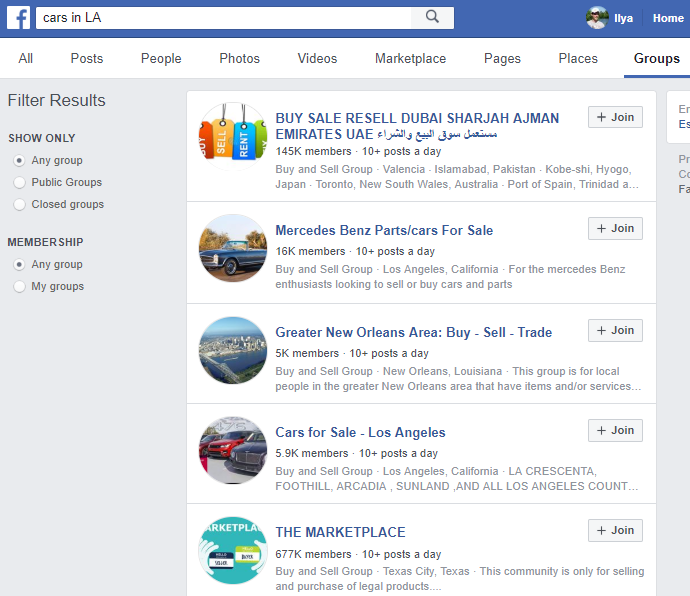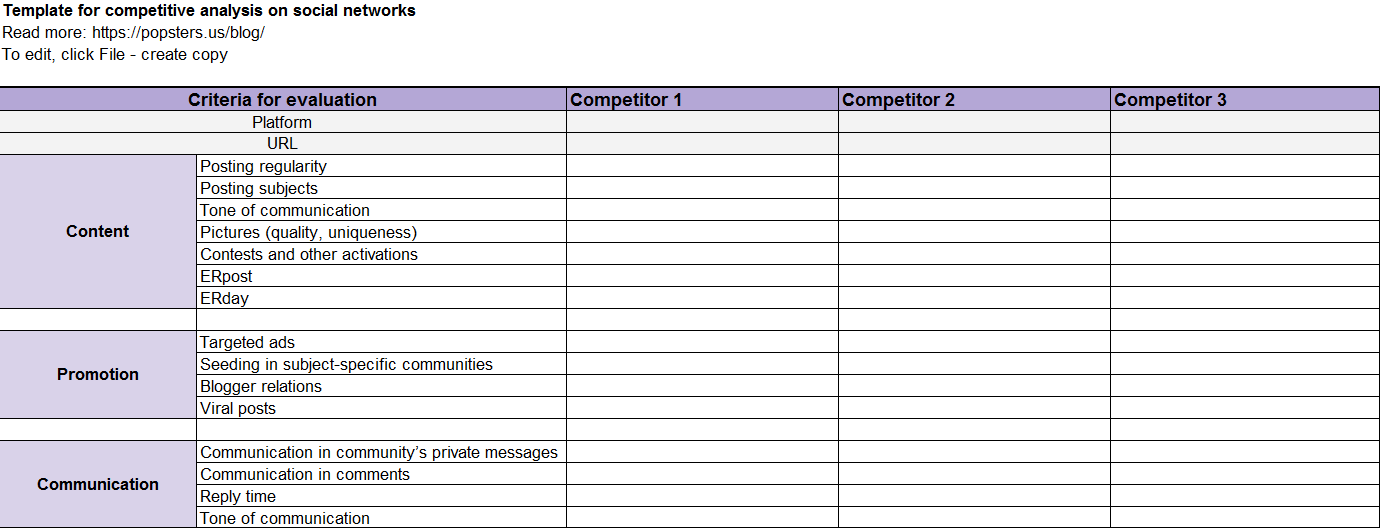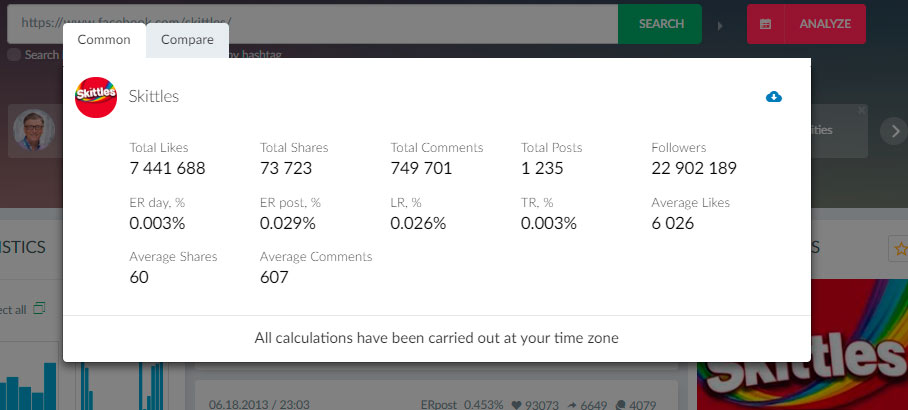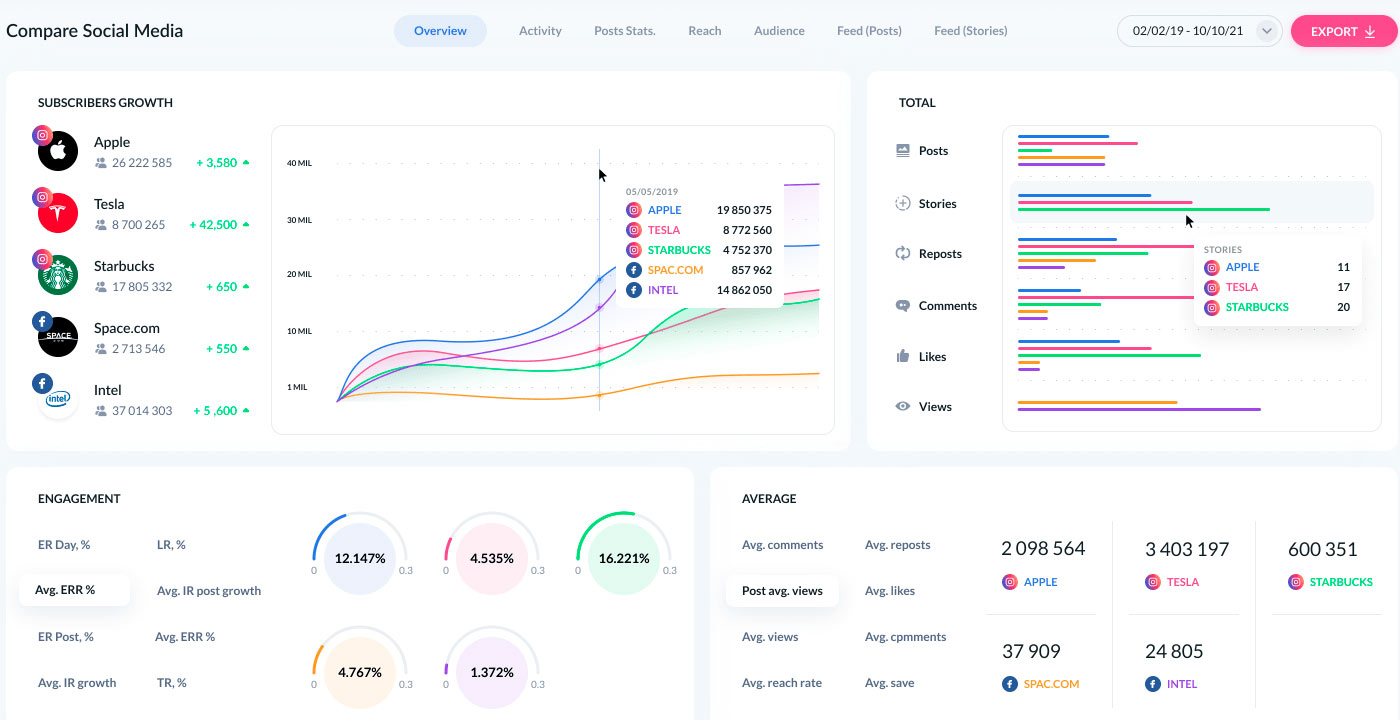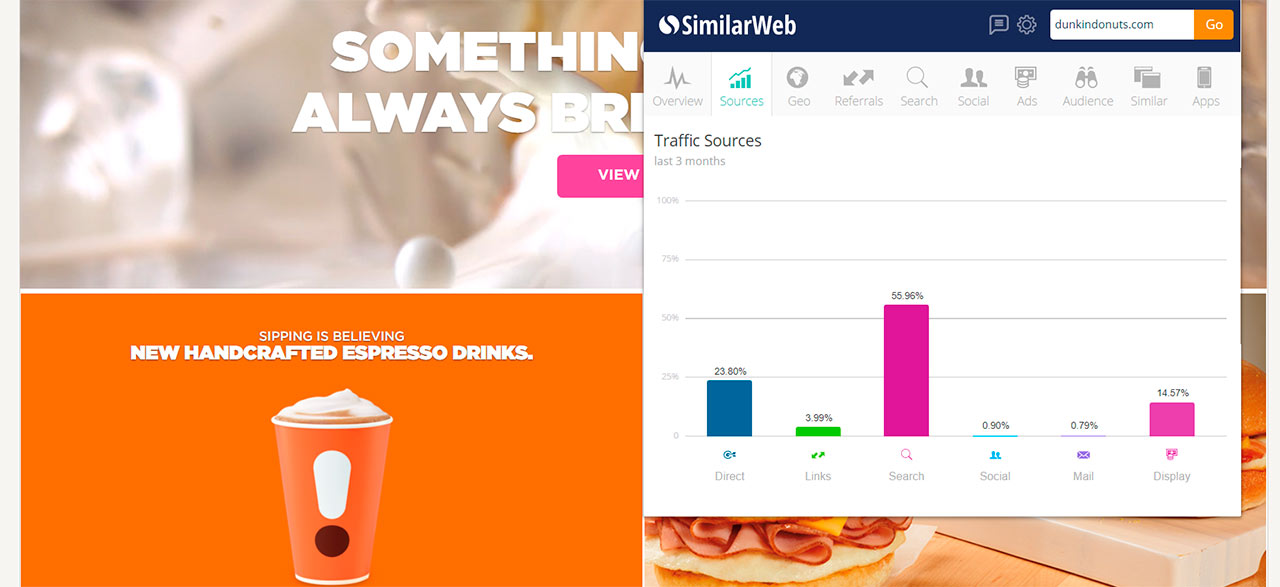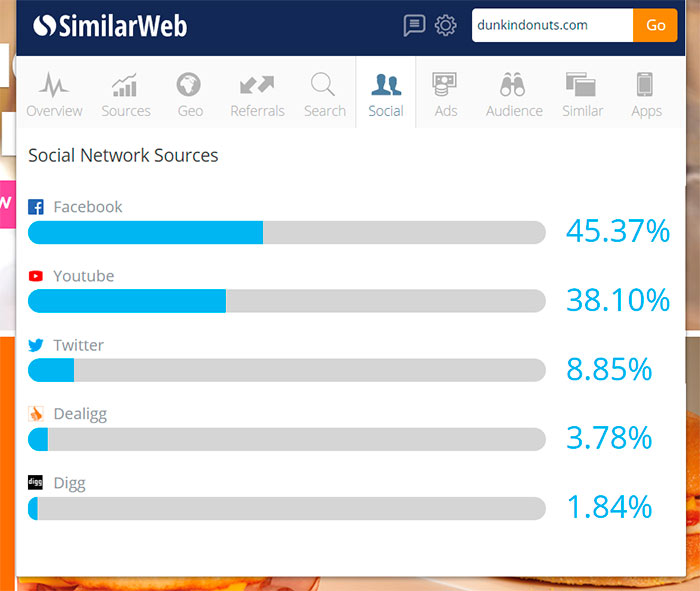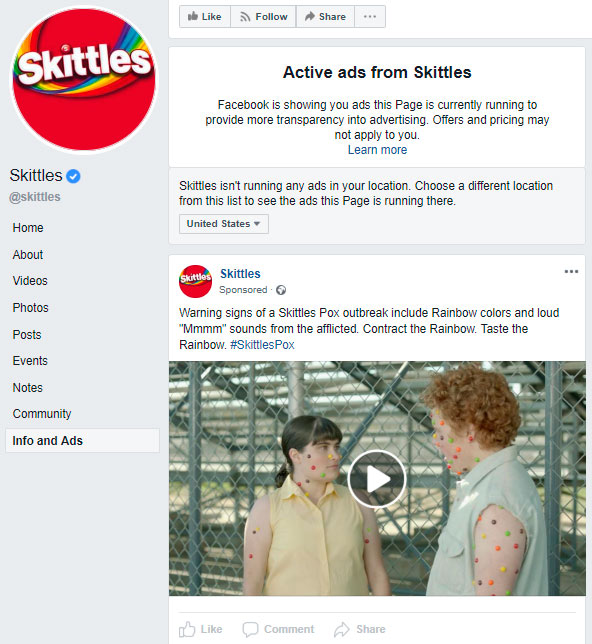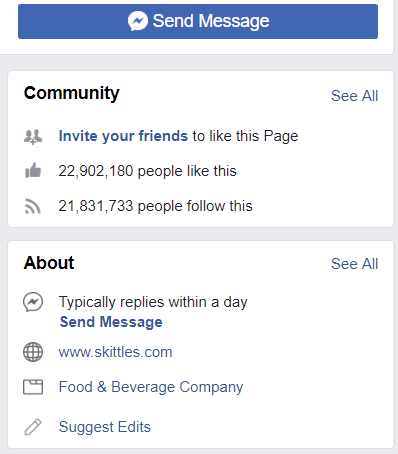Quick Social Media Competitive Analysis: All You Need to Know

You need to know your competitors — first, to understand your own course of action, how to distinguish yourself from them, and what offers besides yours are seen by your customers.
How to Find Your Competitors
It might seem surprising, but for doing Social Media competitive analysis you need to understand who your competitors are. If, for some reason, you did not find it out when launching your product or you work with a client who filled the brief not quite carefully, the first step is to define the competitors.
There are direct and indirect competitors. Direct ones offer a product or service very similar to yours. For example, if you produce tee, then all the other tee manufacturers are your direct competitors.
Indirect competitors sell a product that can replace yours — for tee, these are coffee or cacao manufacturers.
So you have competitors anyway, even if you came up with a unique, world’s best, one of a kind product. For example, you opened the first virtual reality club in town. Yes, there’s no similar place, but clients could go on a weekend not to your place but to an escape room or amusement arcade.
- Search on the internet.
- Poll among clients.
- Industry’s rankings.
- Social media.
The last item is especially relevant for small businesses. Such companies often don’t create their own website, limiting themselves to only pages on social media. They can be directly found using the social network’s built-in search.
A big drawback of this method is that if the competitor’s name doesn’t include the industry or city, you’ll miss it. Such companies can be found using a parser by key words. At the first stage, Social media competitive analysis does not always require any expensive tools.
- Collect key words relevant to your business.
E.g., “Cars in Los Angeles”, “Cars for Sale in New York”, etc. - Analyze your competitors ' pages.
Chose 1 to 3 primary competitors and 3 to 7 secondary ones to analyze.
Analysis Criteria for Social media
Define the criteria to assess the competitors on Social media. There are quantitative (i.e. measurable) and qualitative criteria in Social Media competitive analysis.
Three Areas of Competitor Assessment on Social Media:
Content and community keeping analysis
- Posting regularity.
- Posting subjects.
- Tone of communication.
- Pictures (quality, uniqueness).
- Use of subscriber content.
- Contests and other activations.
Promotion analysis
- Targeted ads.
- Seeding in subject-specific communities.
- Blogger relations.
- Viral posts.
Communication analysis
- Communication in community’s private messages.
- Communication in comments.
- Reply time.
- Tone of communication.
Prepare a table, which you will fill with competitor analysis data for comparison. Or use our template for social media competitive analysis like example. Copy it to your Google Drive and leave the criteria you need (you can use this file as a competitive analysis example.).
Competitors’ content analysis on Social media
At this stage, we will analyze post subjects, tone of communication, handling of newsbreaks, posting frequency and content quality.
Subjects, topics and the brand’s ‘voice’ can be determined from thorough investigation of materials.
Manual handling of quantitative data will take a long time, so prepare a tool to analyze the community’s content.
Search for the required page on popsters.com and specify the time range.
The output will show:
- ERpost.
- ERday.
- Post count.
And other parameters.
Divide the number of posts by the number of days covered by the competitive analysis and you'll see the posting frequency.
The like count and comment count will show the activity in the community.
Popsters will find the most popular posts — by like count, comment count or engagement rate. These data will help to understand what subjects work best for the competitor, so you could develop your own Social media strategy.
It is also important to the Social Media competitive analysis also to analyze text length, posting time and day of the week and dozens of other parameters.
Fill the obtained data for each competitor in the competitor analysis table.
Tracking important competitor metrics on social media
For automatic analysis of your pages and competitors, understanding the geography of subscribers, reach, content preferences, analytics of posts and stories, the Lucmus tool can be useful.
Convenient tracking of key performance metrics: Engagement Rate, Reach, interactions with posts and stories - analysis of more than 20 indicators for a deep understanding of the audience.
Analyzing Competitor Websites and Traffic
Find out how actively your competitors use social media to get traffic to their website. In order to do that, use SimilarWeb. The tool will determine sources of visits to the website, including search engines.
For example, most of the visitors of the website of Dunkin' Donuts from Social networks come from Facebook and YouTube.
Competitor Ads analysis
Look at your competitors’ targeted ads:
For Facebook, go to the company’s page and find Info and ads in the left menu. You will see all the ad posts and Instagram Stories launched under that page’s name.
Use parsing (for example, TargetHunter) to find competitors’ promo posts published on VK. Tools find hidden posts (those not published on community walls) by id.
Competitors’ ad units can be seen in Publer.pro — enter the website’s URL in the search box and the tool will find all ads leading to that page.
Here you will also find ads on VK groups, together with the dates of placement and the ad post, even if it is already deleted.
If a competitor works with Instagram bloggers, you will find the posts in the competitor account’s mentions. However, this way doesn’t allow tracking ads in Stories.
Communication Analysis
Analyze communication with the audience: possible ways of communication, reply time and usefulness.
Check and analyze all the competitor’s channels of communication on social media:
- Chat bots and private messages.
- Replies to comments.
- Replies in Fb Discussions (if turned on).
- Replies to brand mentions outside its own pages (e.g., in private user accounts).
To track competitor’s mentions on user pages (this is very important for Social Media competitive analysis.), use monitoring tools: Brand24, Social Mention, etc., based on your budget.
Analyzing Communication Tone
Tone is the company’s style of communication, the brand’s language. To assess the competitor’s communication tone, answer several questions:
- Is the way to address a user formal or informal?
- Does the brand speak to a client in parental manner (teaching, warning), adult manner (as an equal, with humor) or childishly (infantilely, playfully)?
- Do they use humor? What are the subjects of the brand’s jokes?
- Does the brand communicate in the same way on different platforms or the communication differs between social media?
After collecting the material during the competitive analysis, fill out the table using our template. Note the competitors’ strengths and weaknesses, i.e. do a simple SWOT analysis.
This information, combined with the analytical data with using Social Media content analytics tool, will provide a better insight of the competitive environment.
Now derive ideas and approaches you could use for your community.
Useful articles on a similar topic:
- Russian Speakers’ Activity on Social Media in 2018: Popsters’ Study;
- The Best Free and Paid Social Media Analytics Tools;
- All about TikTok Ads, Bloggers and Promotion;
- How to Create Viral Posts that Generates Thousands Visitors.
Try Popsters Trial plan to get content activity statistics of any pages for a next 7 days for free
Try for free
